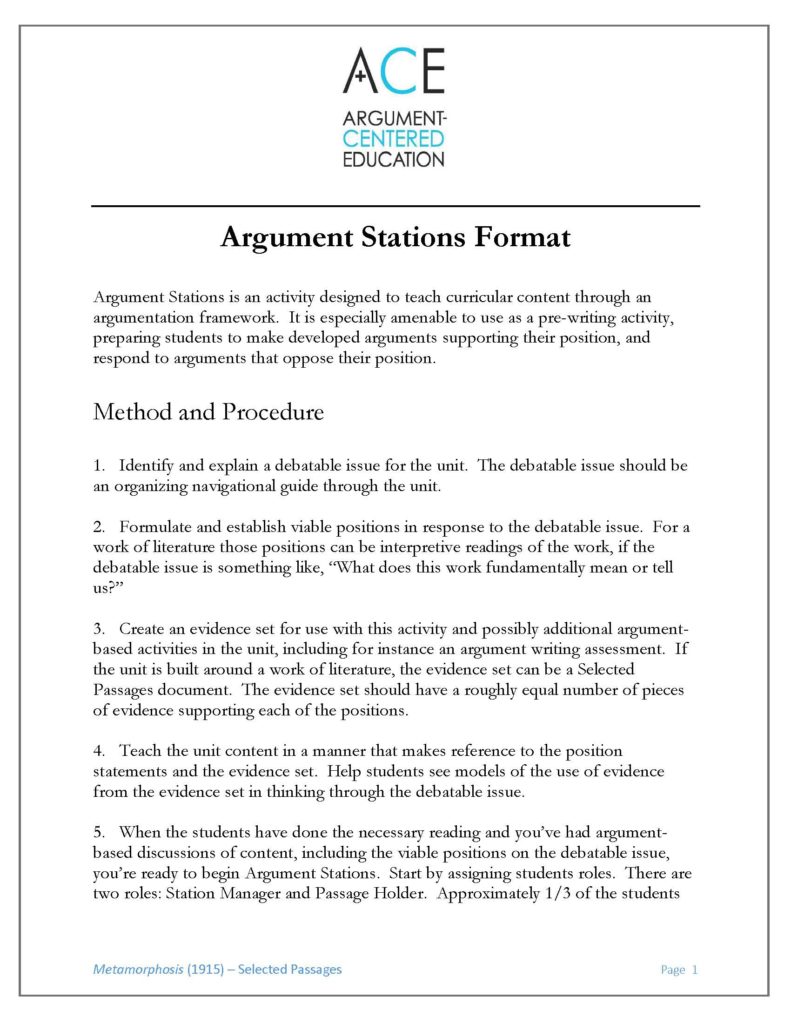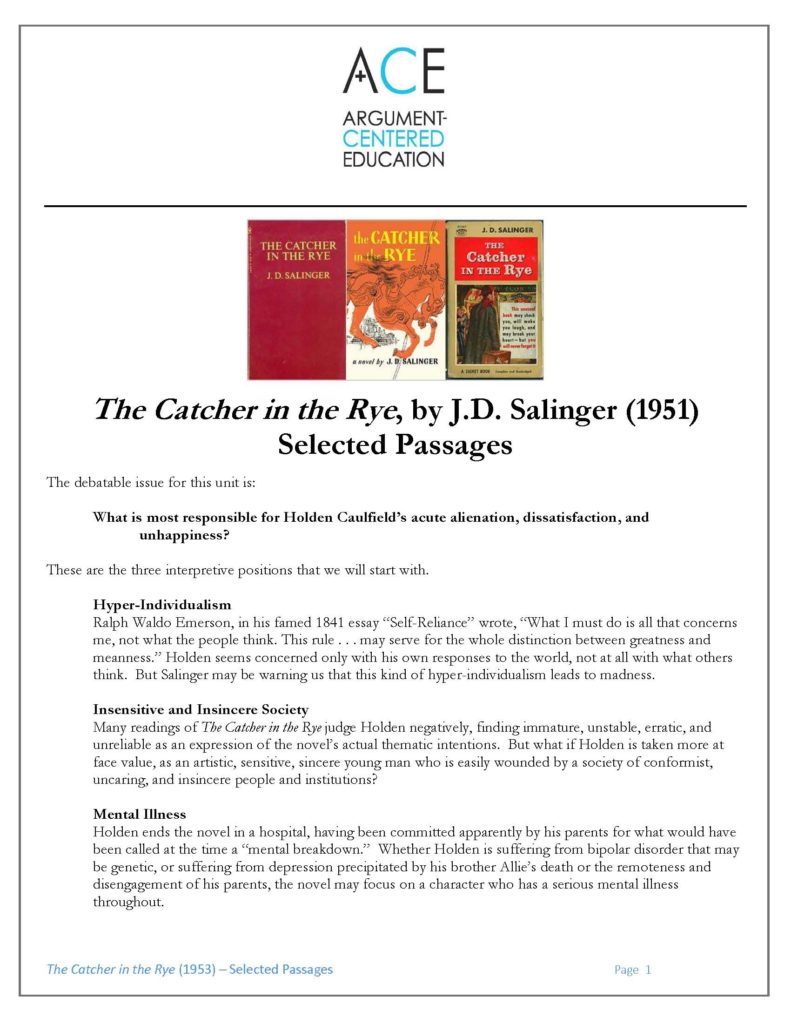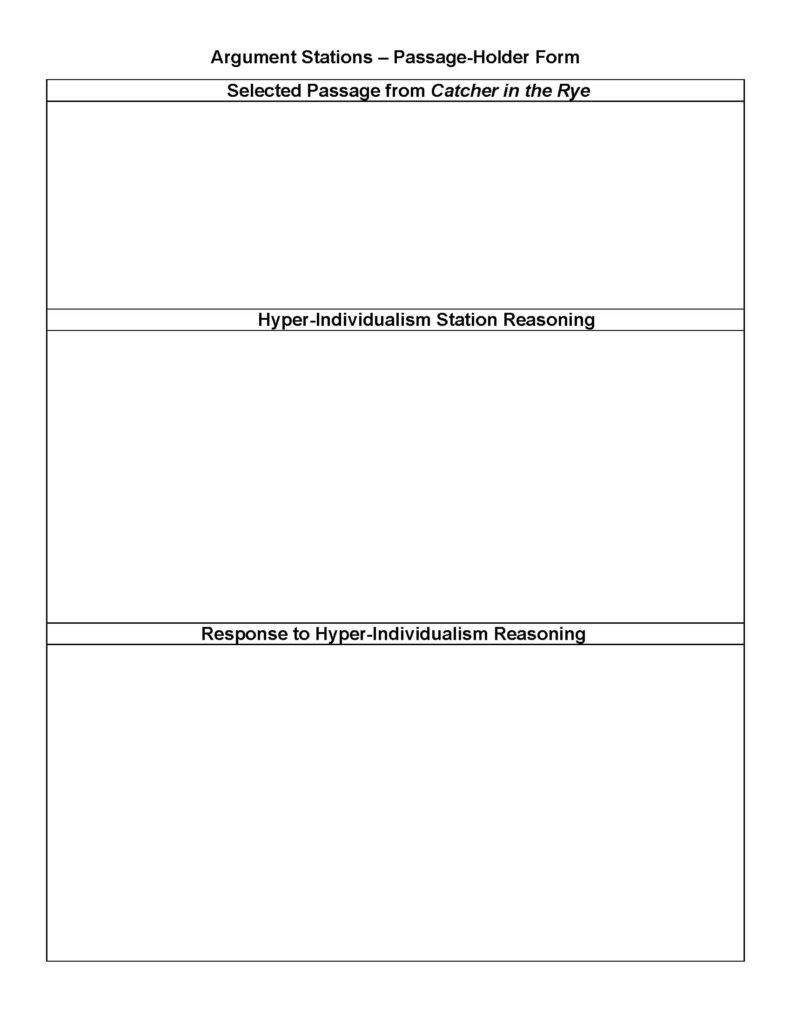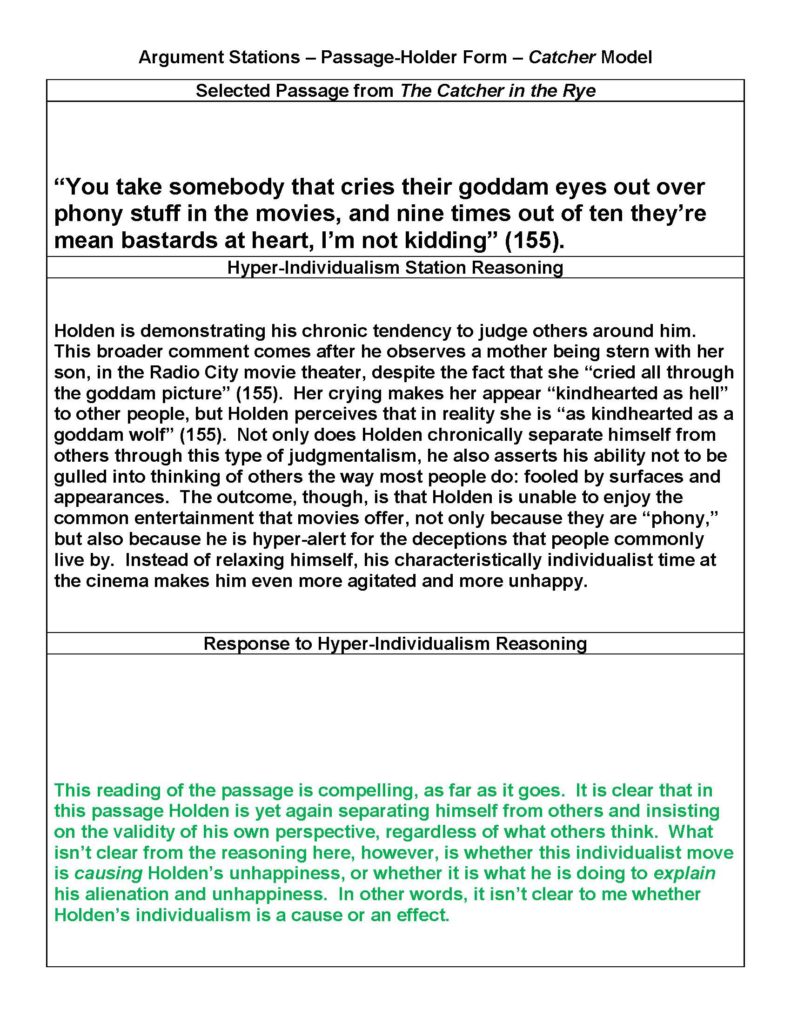
Voice, Language, and Characterization: ‘The Catcher in the Rye’ and Argument Stations
Overview
Holden Caulfield still has one of the most distinctive, recognizable, and influential voices in all of American literature, more than 65 years after reclusive writer J.D. Salinger brought him into existence. He certainly has one of the most widely heard voices, with The Catcher in the Rye having sold more than 65 million copies since its publication in 1951, and still selling more than 1 million copies a year, a significant portion of those being swooped up by high school and college students.
J.D. Salinger’s original, influential The Catcher in the Rye — still one of the most widely read and highly praised and awarded novels common to high school English reading lists, 65 years after its publication, and despite enormous transformations in adolescent life in this country — offers an opportunity to place under the literary microscope diction, tone, slang, repetition, dialogue, the attentive gaze, choices of metaphor. By studying Catcher, students learn how all of these techniques and more are accessed by writers to produce a distinctive, identifiable voice, one that builds out into rich and meaningful characterization.
High school students can and should learn these literary and literacy concepts through interpretive argumentation. By learning more about masterful language use, literary voice, and characterization, students will become better, closer, more attentively meaning-making readers. Argumentation sharpens and deepens this process of learning. Argument Stations is the assessment format we have used with HS partners teaching The Catcher in the Rye.
Debatable Issue and Interpretive Positions
The debatable issue for this project is:
What is most responsible for Holden Caulfield’s acute alienation, dissatisfaction, and unhappiness?
These are the three interpretive positions — in effect, three primary explanations for Holden’s condition — in response to the debatable issue that we have formulated for this project.
Hyper-Individualism
Ralph Waldo Emerson, in his famed 1841 essay “Self-Reliance” wrote, “What I must do is all that concerns me, not what the people think. This rule . . . may serve for the whole distinction between greatness and meanness.” Holden seems concerned only with his own responses to the world, not at all with what others think. But Salinger may be warning us that this kind of hyper-individualism leads to madness.
Insensitive and Insincere Society
Many readings of The Catcher in the Rye judge Holden negatively, finding him immature, unstable, erratic, and unreliable as an expression of the novel’s actual thematic intentions. But what if Holden is taken more at face value, as an artistic, sensitive, sincere young man who is easily wounded by a society of conformist, uncaring, and insincere people and institutions?
Mental Illness
Holden ends the novel in a hospital, having been committed apparently by his parents for what would have been called at the time a “mental breakdown.” Whether Holden is suffering from bipolar disorder that may be genetic, or suffering from depression precipitated by his brother Allie’s death or the remoteness and disengagement of his parents, the novel may focus on a character who has a serious mental illness throughout.
Method and Procedure
Here is the “universal” version of the Argument Stations activity.

What follows here is the adaptation of Argument Stations for the unit on The Catcher in the Rye that we have argumentalized with partner schools.
(1)
Review the debatable issue and interpretive positions. Discuss and define challenging vocabulary. Illustrate through the close reading of a passage of your choice how masterful uses of language can create voice which in turn deepens and enriches characterization.
(2)
Distribute the Selected Passages for The Catcher in the Rye. Make clear how the passages are cited, along with the importance of going to the section of the novel from which they are taken in order to get the fuller context — what is happening in the story, what leads up to and follows the passage, what is the broader thematic and characterizational surroundings of each passage.

(3)
Teach the unit content in a manner that makes reference to the position statements and the evidence set. Help students see models of the use of evidence from the evidence set in thinking through the debatable issue.
(4)
When the students have done the necessary reading and you’ve had argument-based discussions of content, including the viable positions on the debatable issue, you’re ready to begin Argument Stations on The Catcher in the Rye. Start by assigning students roles. There are two roles: Station Manager and Passage Holder. Approximately 1/3 of the students should be assigned Station Manager roles and 2/3 should be assigned Passage Holder roles.
(5)
Station Managers should each receive a Station Manager Form, and they should each be assigned on of the three interpretive positions on the question of what is primarily responsible for Holden’s alienation and unhappiness. An equal number of Station Managers should be assigned to each of the positions.

(6)
The role of the Station Manager will be to respond to the passages brought to them by the Passage Holders. They will explain to the Passage Holder that their passage supports the Station Manager’s position, using reasoning that explains how it is that the passage is supportive, or they will explain how the passage opposes their position, by supporting a competing, alternate position.
(7)
Passage Holders should each be assigned a passage from the evidence set. They should also select a second passage from the text themselves. They should receive two Passage Holder Forms. Passage Holders should take their passages and their forms to Stations representing each of the viable positions. Once in front of the Station Manager they should read their passage to the Station Manager, and listen for (and take notes on, in the form) the Station Manager’s reasoning through the passage and its relationship to the SM’s position. The Passage Holder should then respond to this reasoning, agreeing with it but adding to it, disagreeing with it and offering alternative reasoning, or critiquing the reasoning in some way.

(8)
The Passage Holder should complete both of their forms, by going around to the Stations that represent each position. The Station Manager should explain their reasoning to the Passage Holder who should write it out in the Passage Holder Form’s fields. The Passage Holder might need some time away from the Stations to complete their responses on the form. The Station Manager should use any down time between visits from Passage Holders to complete their form.
(9)
Before beginning, distribute a copy of the Passage Holder Form Model. Review it in detail with students, checking for understanding through quick-writes and cold calls. Explain that it is an idealized model, and that their work should attempt to come as close to it (or as close to surpassing it) as possible. Clarify that the work of the Station Managers is modeled on the document in the reasoning fields, and that the Station Manager Form itself can only be completed after the Station Manager has responded to all of the text brought to their attention by Passage Holders.
The Passage Holder Form Model uses this passage — not included on the Selected Passages document — from the incident in which Holden goes to Radio City to see a film and is distracted by a mother simultaneously moved to tears by scenes in the movie callously and repeatedly telling her son who has to use the bathroom to get back in his seat.
You take somebody that cries their goddam eyes out over phony stuff in the movies, and nine times out of ten they’re mean bastards at heart, I’m not kidding (155).

(10)
The activity can end with students submitting their forms. You can also conduct a discussion, either before they are submitted or after they are turned back, generated by the argumentation made in the speaking and writing that the activity required. One point of emphasis in this discussion can be to ask students to generate a set of argumentative claims from the evidence and reasoning that emerged in connection to the interpretive positions.

